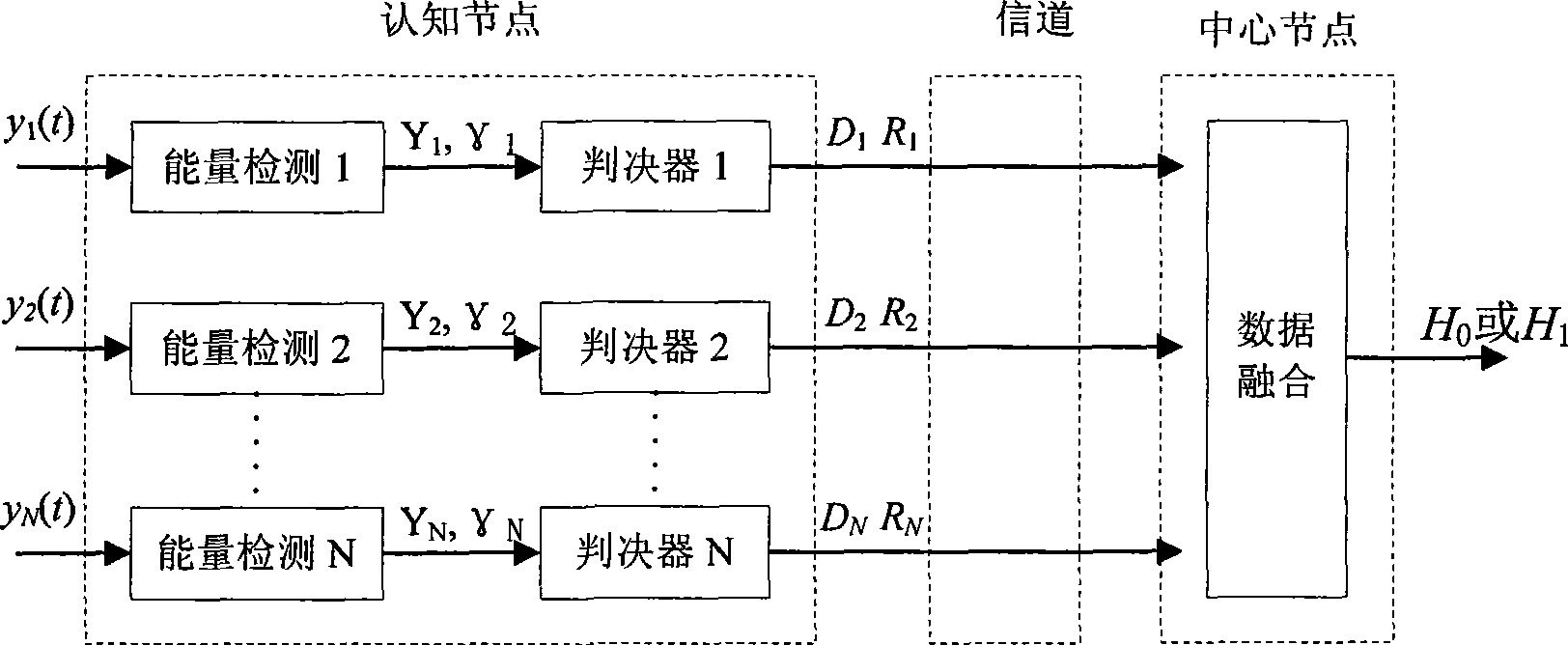Cooperative spectrum sensing method based on likelihood ratio in cognitive radio
A technology of collaborative spectrum sensing and likelihood ratio, applied in the field of collaborative spectrum sensing based on likelihood ratio in cognitive radio, to achieve the effect of simple calculation, good detection performance and improved reliability
- Summary
- Abstract
- Description
- Claims
- Application Information
AI Technical Summary
Problems solved by technology
Method used
Image
Examples
Embodiment Construction
[0018] The method includes two parts: local detection of cognitive nodes and data fusion of central nodes. Cognitive nodes use energy detection to make local judgments based on the maximum likelihood criterion for the energy detection values, so as to obtain local judgment results about authorized users, and use the likelihood ratio as a judgment credibility measure, and then each cognitive node takes the local The judgment result and the local likelihood ratio are quantified and sent to the central node, and the central node makes a collaborative judgment based on the results of each cognitive node.
[0019] 1 Local energy detection and judgment
[0020] Assuming that there are N cognitive nodes and a central node in the cognitive radio network, each cognitive node performs local detection independently, and the cognitive nodes send the local detection results to the central node through the control channel, and then the central node makes the final decision. The system oper...
PUM
 Login to View More
Login to View More Abstract
Description
Claims
Application Information
 Login to View More
Login to View More - R&D
- Intellectual Property
- Life Sciences
- Materials
- Tech Scout
- Unparalleled Data Quality
- Higher Quality Content
- 60% Fewer Hallucinations
Browse by: Latest US Patents, China's latest patents, Technical Efficacy Thesaurus, Application Domain, Technology Topic, Popular Technical Reports.
© 2025 PatSnap. All rights reserved.Legal|Privacy policy|Modern Slavery Act Transparency Statement|Sitemap|About US| Contact US: help@patsnap.com



